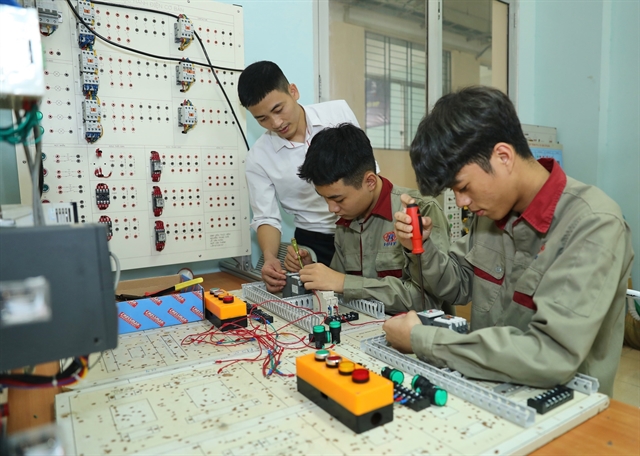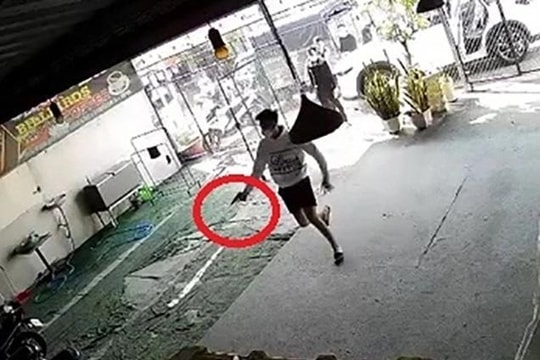 |
| A vocational instructor demonstrates electrical installation techniques to two students in a vocational college in Hà Nội. — VNA/VNS Photo |
HÀ NỘI — Vocational colleges in Việt Nam face a growing challenge in attracting students, as more high school graduates are prioritising a university education.
Lê Lâm, President of Đại Việt Sài Gòn College, believes that high school graduates tend to view vocational training as a last resort, placing it at the bottom of their lists of choices after exhausting all university options.
The lack of interest has left vocational colleges struggling to fill seats. Some have turned to middle school graduates to boost enrolment but have yielded little result.
"Several vocational institutions have tried to cast a wider net, even including middle school graduates, but the situation remains bleak," said Lâm.
He illustrates the severity of the issue with a simple calculation: Out of approximately one million high school graduates annually, about one-fifth do not enrol in university.
Assuming all of them were to go to vocational colleges, with more than 2,000 such institutions, each would receive fewer than a hundred students a year, barely enough to maintain operations.
Đồng Văn Ngọc, Principal of The Hà Nội College for Electro-Mechanics, believes that the overwhelming preference for academic degrees will lead to a shortage of skilled workers in the long term.
He emphasises the need for a more focused approach to investing in vocational training, suggesting that the government should prioritise key areas rather than spreading resources too thin.
Additionally, he advocates for a more flexible regulatory framework that grants vocational institutions greater autonomy in operations and personnel while ensuring accountability through supervision.
Lê Huy Nam, Director of the Education Department under the Party Central Committee's Commission for Information and Education, underlines a significant gap in the labour market, with 38 million individuals lacking formal vocational training.
He attributes the gap to several factors, including outdated policies, inadequate governance and weak collaboration between vocational institutions and enterprises.
If left unaddressed, he believes the issue could severely undermine the development of a high-quality workforce in Việt Nam, hindering the country's progress toward its industrialisation targets.
Nguyễn Khánh Cường, Rector of the LILAMA2 International Technology College, underlines the high costs of vocational training, which can reach billions of VNĐ per student over a three-year programme, making it unsustainable without government support.
He suggests Việt Nam adopt a model similar to Germany, where enterprises contribute to a fund for vocational training. He also shares that his college has partnered with enterprises in cost-sharing and programme design.
"If the government involves enterprises in vocational training, this model will thrive and produce highly skilled graduates," he said.
Their voices have been heard, with Deputy Minister of Labour, Invalids and Social Affairs Lê Tấn Dũng stating that plans are underway to review and invest in vocational education. The focus will be on key sectors, alongside strengthening career guidance and job placement.
"The Ministry will provide expert advice to the government on improving the vocational training landscape and developing a highly skilled workforce," said Dũng. — VNS
























